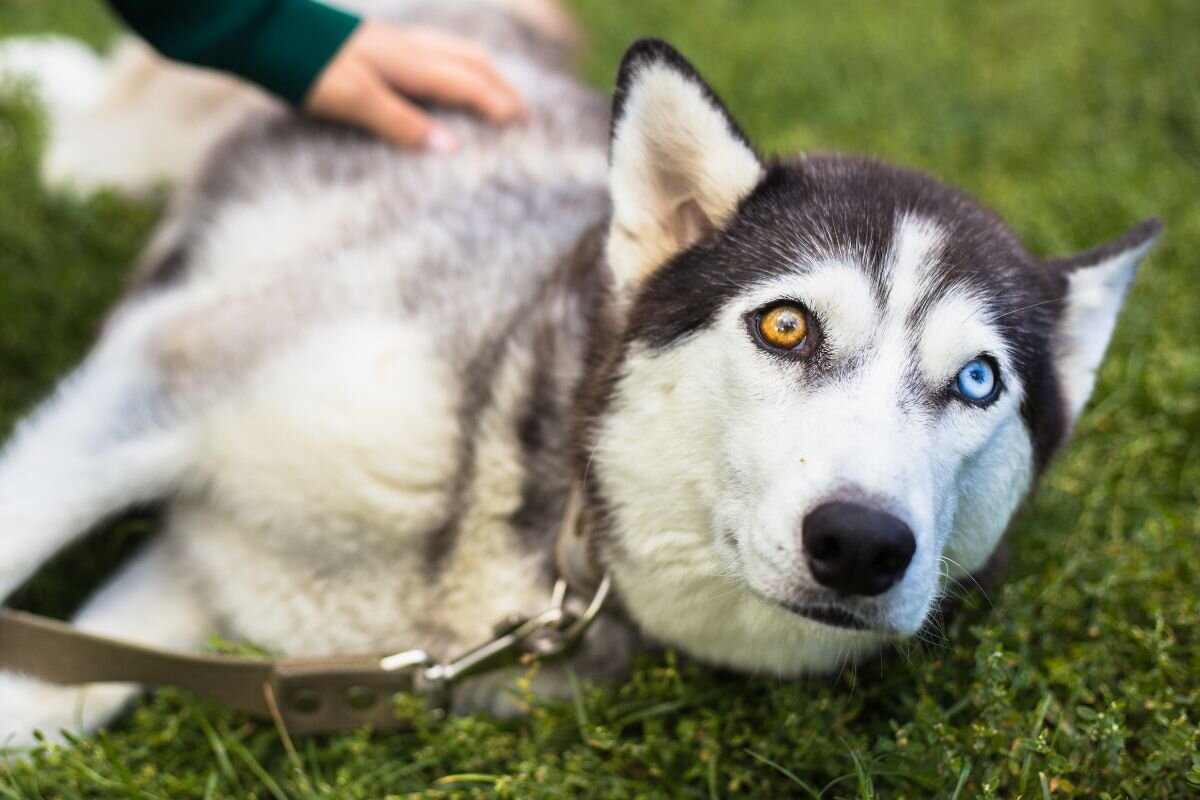If you have ever encountered a dog with eyes of different colors, you may have been enchanted by this unusual phenomenon. Heterochromia iridum is the genetic phenomenon when an animal or a person has irises of different colors. Although this condition is more common in dogs, cats, and horses, it can also occur in humans, albeit less frequently.
Legends
There are several legends and myths surrounding this intriguing feature, creating an aura of mystery around it. One legend claims that dogs with different-colored eyes can simultaneously see the sky and the earth. Another story says that such dogs are natural protectors, while pets with brown or red eyes are considered spiritual beings. There is also a belief that riding dogs with heterochromia run faster than their counterparts with eyes of the same color.
Although these legends sound romantic and captivating, they undoubtedly lack scientific basis. Nevertheless, this adds a certain mystical aura to this phenomenon, making us think about the possible hidden abilities of these unusual creatures.
However, regardless of whether you believe in the legends or not, it cannot be denied that dogs with eyes of different colors look truly unique and attractive. Their unusual appearance makes us ponder the mysteries of nature and admire its diversity. Perhaps it is this element of mystery that makes heterochromia so charming to many animal lovers.
Myth about Blindness in Dogs with Different-Colored Eyes
One of the common misconceptions about heterochromia in dogs is that the eye of "unusual" color is supposedly blind, but this is far from true. Dogs living with this genetic anomaly typically have the same sharp vision as their counterparts with eyes of the same color. The fact is that dogs' vision significantly differs from human vision, and the presence of heterochromia itself does not affect its quality.
If you notice that your pet has eyes of different colors and wonder if they are partially blind but hesitate or are afraid to ask the veterinarian about it, there is a simple way to check their vision yourself.
Ask someone to sit behind your dog and cover one of its eyes. Stand in front of the pet with a brightly colored ball, for example. Throw the ball, and if the dog's gaze follows it, then it can see well enough. Then cover the other eye and repeat the procedure. If the dog can track the ball with both eyes, it indicates that the dog can see.
This simple test can help dispel the common myth about blindness in dogs with heterochromia. The unusual eye color is merely a cosmetic feature that does not affect the pet's vision quality.
Of course, if you notice any signs of vision impairment, such as frequent blinking, squinting, or an inability to focus on objects, it is better to consult a veterinarian. But in most cases, heterochromia in dogs is just a unique trait that makes them even more charming and appealing.
Breeding
Heterochromia in dogs is a phenomenon that raises many questions and debates. One of the most common dilemmas is whether dogs with this genetic feature can be bred intentionally or if it occurs randomly?
Currently, there are more assumptions than actual evidence that heterochromia can be an inheritable trait. Nevertheless, most mixed-breed dogs have the genetic potential to produce offspring with different-colored eyes. Among purebred breeds, this characteristic is most commonly found in Australian Shepherds, Dalmatians, Catahoula Leopard Dogs, and Huskies, but no breed is immune to this phenomenon.
Interestingly, most dog show associations consider heterochromia a defect, and any dog with different-colored eyes will automatically be disqualified. However, Huskies are an exception to this rule - representatives of this breed with heterochromia are still allowed to participate in dog shows.
Despite some organizations viewing heterochromia as a defect, many dog owners consider this feature incredibly beautiful and giving their pets a unique appearance. And indeed, from a physical standpoint, dogs with eyes of different colors are perfectly healthy, and this genetic anomaly should not pose any problems in the future.
Thus, while the question of intentional breeding of dogs with heterochromia remains open, it is essential to remember the uniqueness of this feature and debunk the myths surrounding this genetic anomaly. Each dog with different-colored eyes is a true wonder of nature, and their appearance deserves admiration.








